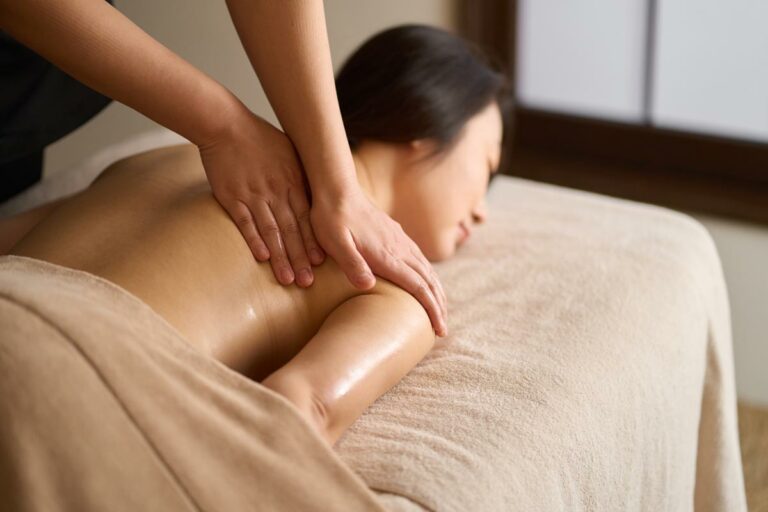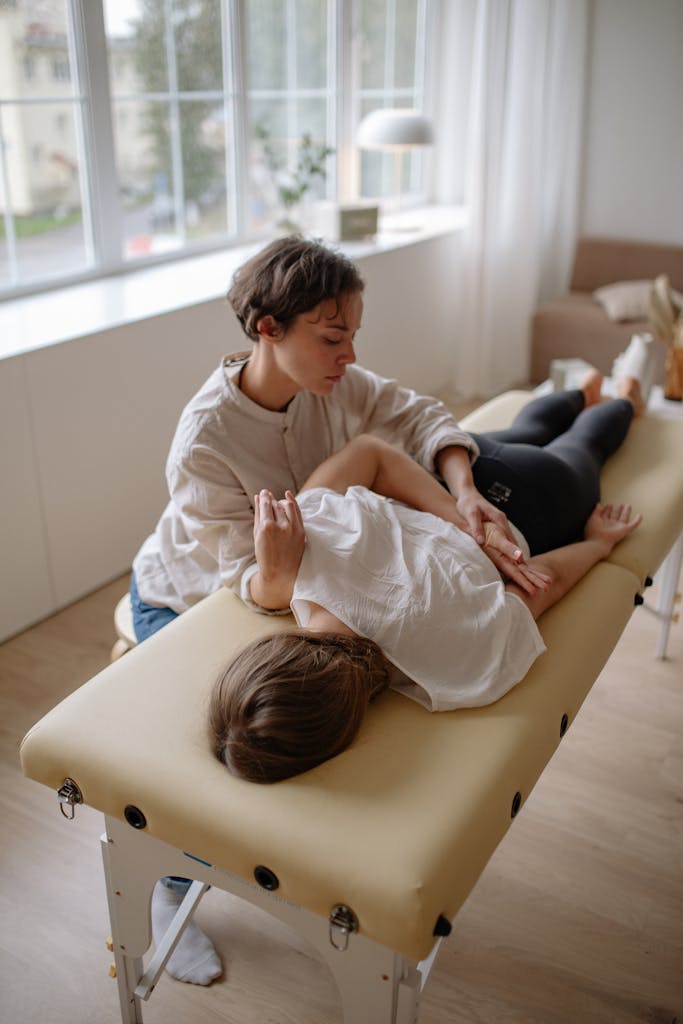What does Cupping do in a Massage?
Introduction to cupping
Cupping involves placing small cups on troubled areas of the body and creating suction to pull the tissue up slightly. This helps relax muscles and tissues, relieve pain, and trigger the body’s natural healing processes.
Cupping is a form of traditional Chinese and Middle Eastern medicine. People have practiced cupping therapy for thousands of years.
The suction helps facilitate the flow of “qi” in the body. Qi is a Chinese word, meaning life force.
Cupping helps balance yin and yang, or the positive and negative, within the body. Restoring balance between these two extremes is thought to help with the body’s resistance to pathogens as well as its ability to increase blood flow and reduce pain.
Cupping increases blood circulation to the area where the cups are placed. This relieves muscle tension, which can improve overall blood flow and promote cell repair. It may also help form new connective tissues and create new blood vessels in the tissue.
What are the different types of cupping?
Cupping techniques vary by suction method, suction power, the area treated, other materials used with the cups, and other factors. Techniques include:
Dry cupping: A cupping professional generates negative pressure inside cups with fire, a manual pump, or electrical suctioning. Dry cupping is also called retained cupping or static cupping.
Massage cupping: A therapist applies oil to the skin and moves the cups with weak suction. Massage cupping is also called dynamic cupping, gliding cupping, and moving cupping.
Flash cupping: A practitioner uses quick suctions of light to medium pressure for less than 30 seconds at a time. This is also called empty cupping. Flash cupping is suitable for people who should not use dry cupping, such as children.
Wet cupping: A cupping professional lightly punctures the skin before applying the cups. This method is also known as full cupping, bleeding cupping, or bloodletting cupping. Wet cupping carries a higher risk of scarring, infection, and fainting. This method is not legal in some states or countries.
Needle cupping: Needle cupping is used along with acupuncture. The therapist applies short acupuncture needles, then they place cups on the areas to be treated.
Laser cupping: A laser probe is placed inside the cups to stimulate acupuncture points. This method is designed to combine the benefits of acupuncture and cupping in one session.
Herbal cupping: A practitioner boils an herbal solution, soaks bamboo cups, and applies the slightly cooled cups to the skin.
Magnetic cupping: This uses cups with magnets inside often to treat conditions affecting knees or other large joints.
Water cupping: This technique uses cups partially filled with warm water. The practitioner also places burning cotton wool in the cup before applying the cup to the skin.
Cupping therapy has a reputation for easing discomfort and improving quality of life. The following conditions may improve with this treatment:
Low back pain: Cupping can help lessen pain and improve function among people with acute and chronic low-back pain.
Fibromyalgia: Cupping therapy, alone or with acupuncture and conventional medicine, has successfully relieved pain in patients with fibromyalgia, a condition of widespread musculoskeletal pain.
Chronic neck pain: Cupping therapy can help relax neck muscles and make them more flexible.
Carpal tunnel syndrome: Cupping may help reduce pain and numbness associated with carpal tunnel syndrome, which affects the hands and wrists.
Heavy menstrual bleeding: Dry cupping may help decrease the amount of menstrual blood flow in women with menorrhagia (excessive menstrual bleeding).
Cupping therapy also shows potential to treat:
Digestive issues: Diseases of the lungs and airways, including bronchitis, asthma, and pneumoniaEczema (red, itchy skin) and boils (painful infection of hair follicles)
High blood pressure (hypertension)
Cellulite (fat deposits beneath the skin that cause a dimpled appearance)
Click here to learn more about cellulite.
Who should not get cupping
Children under 4 years old and older adults: Very young individuals and older adults have a greater risk of severe marking and blistering.
Pregnant women: During pregnancy, cupping should not be applied to the lower back and the lower and upper abdomen to avoid the risk of early contractions. Cupping also should be avoided during the first trimester.
Anyone on blood-thinning medications: These people could experience excessive bleeding or bruising with this therapy.
How long does it take to work?
It may depend on the specific condition. A possible protocol for lower back pain of five sessions of dry cupping with a break of 3–7 days between sessions..
Give us a call at https://bodyhavenmassage.co.nz/contact/ and book your next cupping session!







